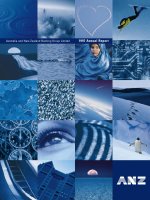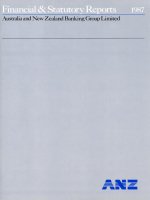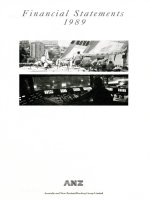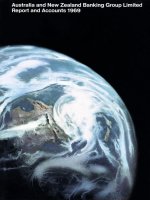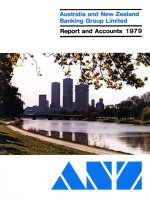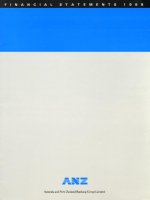Views of assia australia and new zealand
Bạn đang xem bản rút gọn của tài liệu. Xem và tải ngay bản đầy đủ của tài liệu tại đây (11.86 MB, 74 trang )
free ebooks ==>
www.ebook777.com
www.ebook777.com
free ebooks ==> www.ebook777.com
®
Br
ca
ti anni
LEARNING
L I B R A R Y
Views of Asia, Australia,
and New Zealand
Explore some of the world’s oldest and most
intriguing countries and cities
CHICAGO
LONDON
NEW DELHI
PARIS
SEOUL
SYDNEY
TAIPEI
TOKYO
free ebooks ==> www.ebook777.com
PROJECT TEAM
Judith West, Editorial Project Manager
Christopher Eaton, Editor and Educational
Consultant
Kathryn Harper, U.K. Editorial Consultant
Marilyn L. Barton, Senior Production
Coordinator
Editors
Theodore Pappas
Anthony L. Green
Mary Rose McCudden
Andrea R. Field
Michael J. Anderson
Colin Murphy
Locke Petersheim
Indu Ramchandani (Encyclopædia
Britannica India)
Bhavana Nair (India)
Rashi Jain (India)
Design and Media Specialists
Nancy Donohue Canfield, Design
Megan Newton-Abrams, Design
Karen Koblik, Photos
Joseph Taylor, Illustrations
Amy Ning, Illustrations
Jerry A. Kraus, Illustrations
Michael Nutter, Maps
Copy Editors
Barbara Whitney
Laura R. Gabler
Dennis Skord
Lisa Braucher, Data Editor
Paul Cranmer, Indexer
ENCYCLOPÆDIA BRITANNICA
PROJECT SUPPORT TEAM
EDITORIAL
Linda Berris
Robert Curley
Brian Duignan
Kathleen Kuiper
Kenneth Pletcher
Jeffrey Wallenfeldt
Anita Wolff
Charles Cegielski
Mark Domke
Michael Frassetto
James Hennelly
Sherman Hollar
Michael R. Hynes
Sandra Langeneckert
Gene O. Larson
Michael I. Levy
Robert Lewis
Tom Michael
Janet Moredock
DESIGN
Steven N. Kapusta
Carol A. Gaines
Cate Nichols
ART
Kathy Nakamura
Kristine A. Strom
Nadia C. Venegas
ILLUSTRATION
David Alexovich
Christine McCabe
Thomas Spanos
MEDIA ASSET MANAGEMENT
Jeannine Deubel
Kimberly L. Cleary
Kurt Heintz
Quanah Humphreys
COPY
Sylvia Wallace
Jennifer F. Gierat
Glenn Jenne
Mary Kasprzak
Thad King
Larry Kowalski
Joan Lackowski
Dawn McHugh
Julian Ronning
Chrystal Schmit
Sarah Waterman
INFORMATION MANAGEMENT/
INDEXING
Carmen-Maria Hetrea
Edward Paul Moragne
Marco Sampaolo
Sheila Vasich
Mansur G. Abdullah
Keith DeWeese
Catherine Keich
Stephen Seddon
EDITORIAL TECHNOLOGIES
Steven Bosco
Gavin Chiu
Bruce Walters
Mark Wiechec
COMPOSITION TECHNOLOGY
Mel Stagner
MANUFACTURING
Dennis Flaherty
Kim Gerber
INTERNATIONAL BUSINESS
Leah Mansoor
Isabella Saccà
ENCYCLOPÆDIA BRITANNICA, INC.
Jacob E. Safra,
Chairman of the Board
Jorge Aguilar-Cauz,
President
Michael Ross,
Senior Vice President, Corporate Development
Dale H. Hoiberg,
Senior Vice President and Editor
Marsha Mackenzie,
Managing Editor and Director of Production
© 2008 BY ENCYCLOPÆDIA BRITANNICA, INC.
Cover photos (front): Royalty-Free/Corbis; (back): Australian Picture Library/Corbis. Cover insert photos (left): Paul Thompson—Eye Ubiquitous/Corbis;
(center): Paul Almasy/Corbis; (right): Anthony Cooper—Ecoscene/Corbis
International Standard Book Number: 978-1-59339-512-4
No part of this work may be reproduced or utilized in any form or by any means, electronic or mechanical, including photocopying, recording, or by any
information storage and retrieval system, without permission in writing from the publisher.
BRITANNICA LEARNING LIBRARY: VIEWS OF ASIA, AUSTRALIA, AND NEW ZEALAND 2008
Britannica.com may be accessed on the Internet at .
(Trademark Reg. U.S. Pat. Off.) Printed in U.S.A.
www.ebook777.com
free ebooks ==> www.ebook777.com
Views of Asia, Australia, and New Zealand
I N T R O D U C T I O N
What is the largest continent? Who built the Taj Mahal?
What city is holy to three major religions? Where is the Great Barrier Reef?
Views of
Asia,
Australia,
and New
Zealand, you’ll
In
discover answers to these
questions and many
more. Through pictures,
To help you on your journey, we’ve provided the following guideposts in
Views of Asia, Australia, and New Zealand :
■ Subject Tabs—The colored box in the upper corner of each right-hand
page will quickly tell you the article subject.
■ Search Lights—Try these mini-quizzes before and after you read the
article and see how much—and how quickly—you can learn. You can even
make this a game with a reading partner. (Answers are upside down at the
bottom of one of the pages.)
■ Did You Know?—Check out these fun facts about the article subject.
With these surprising “factoids,” you can entertain your friends, impress
articles, and fun facts,
your teachers, and amaze your parents.
you’ll learn about the
■ Picture Captions—Read the captions that go with the photos. They
people, traditions,
provide useful information about the article subject.
landscapes, and history
■ Vocabulary—New or difficult words are in bold type. You’ll find
that make up many of the
them explained in the Glossary at the end of the book.
countries and cities of
■ Learn More!—Follow these pointers to related articles in the book. These
Asia, Australia, and New
Zealand.
articles are listed in the Table of Contents and appear on the Subject Tabs.
■ Maps—You’ll find lots of information in this book’s many maps.
■ The Country Maps point out national capitals. Globes beside
Subject Tabs show where countries are located in the world.
■ The Continent Maps have a number key showing the location of
all countries.
■ The Icons on the maps highlight major geographic features and climate.
Here’s a key to what the map icons mean:
Deserts and Other Dry Areas
Rainforests
Polar Regions and Other Frozen Areas
General Forests
Mountains
© 2008 Encyclopædia Britannica, Inc.
free ebooks ==> www.ebook777.com
Rice is one of the most important crops grown in
China. Farmers use terraced fields such as these
to grow rice on hillsides.
© Keren Su/Corbis
© 2008 Encyclopædia Britannica, Inc.
www.ebook777.com
free ebooks ==> www.ebook777.com
Views of Asia, Australia, and New Zealand
TABLE OF CONTENTS
INTRODUCTION . . . . . . . . . . . . . . . . . . . . . . . . . . . . . 3
Pakistan: A Young Country with an Ancient History . 38
Asia: The Largest Continent. . . . . . . . . . . . . . . . . . . . 6
Sri Lanka: Island Nation of Natural Riches . . . . . . . 40
EAST ASIA
China: Asia’s Largest Country . . . . . . . . . . . . . . . . . . 8
THE MIDDLE EAST AND TRANSCAUCASIA
The Great Wall: Ancient China’s Giant Guardian . . 10
Yerevan, Armenia: City of Cafés . . . . . . . . . . . . . . . . 42
Japan: Volcanoes, Earthquakes, and Plum Rains. . . 12
Iran: Modern Persia . . . . . . . . . . . . . . . . . . . . . . . . 44
Korean Peninsula: An Asian Land Divided . . . . . . . . 14
Baghdad, Iraq: City of Arabian Nights . . . . . . . . . . . 46
Israel: The Jewish State . . . . . . . . . . . . . . . . . . . . . 48
SOUTHEAST ASIA
Jerusalem: Holy City . . . . . . . . . . . . . . . . . . . . . . . . 50
Phnom Penh, Cambodia: The City of Lady Penh . . . . 16
Amman, Jordan: City on Seven Hills. . . . . . . . . . . . . 52
Angkor Wat: Cambodia’s Treasured Temple . . . . . . 18
Beirut, Lebanon: The City of Wells . . . . . . . . . . . . . . 54
Indonesia: Island Nation of Southeast Asia . . . . . . . 20
Mecca, Saudi Arabia: Holiest City of Islam. . . . . . . . 56
Singapore: The Lion City . . . . . . . . . . . . . . . . . . . . . 22
Damascus, Syria: Pearl of the East . . . . . . . . . . . . . 58
Bangkok, Thailand: City of Angels . . . . . . . . . . . . . . 24
Istanbul, Turkey: City on Two Continents . . . . . . . . . 60
Vietnam: North and South . . . . . . . . . . . . . . . . . . . . 26
AUSTRALIA AND NEW ZEALAND
SOUTH ASIA
Australia: Island Continent . . . . . . . . . . . . . . . . . . . 62
Afghanistan: Mountain Country . . . . . . . . . . . . . . . . 28
Sydney, Australia: A Magnificent Harbor City . . . . 64
Bangladesh: Land of the Bengals. . . . . . . . . . . . . . . 30
New Zealand: Land of the Long White Cloud . . . . . . 66
Thimphu, Bhutan: City in the Heart of the
Wellington, New Zealand: A Visit to New
Himalayas . . . . . . . . . . . . . . . . . . . . . . . . . . . . . . 32
Zealand’s Capital . . . . . . . . . . . . . . . . . . . . . . . . 68
India: Land of Temples and Shrines . . . . . . . . . . . . 34
GLOSSARY . . . . . . . . . . . . . . . . . . . . . . . . . . . . . . . 70
INDEX . . . . . . . . . . . . . . . . . . . . . . . . . . . . . . . . . . . 71
Taj Mahal: Wonder of the World . . . . . . . . . . . . . . 36
Br
®
ca
itanni
LEARNING
L I B R A R Y
Have a great trip!
© 2008 Encyclopædia Britannica, Inc.
RCH LI
T
GH
SE A
free ebooks ==> www.ebook777.com
True or
false?
The highest
point on Earth is
in Asia.
34
19
11
26
42
21
45
3
2
23
16
39
43
18
40
15
14
1
4
20
9
6
33
44
22
31
28
35
5
12
47
46
27
30
41
8
38
7
24
25
36
NOW?ll the major
K
U
O
Y
of a
DID
irthplace
eb
Asia is th
rld.
of the wo
religions
Statue of Buddha in Si Satchanalai, Thailand.
© Royalty-Free/Corbis
6
© 2008 Encyclopædia Britannica, Inc.
www.ebook777.com
13
free ebooks ==> www.ebook777.com
The Largest
Continent
A
29
17
37
32
sia is the world’s largest continent. It covers about one-third of
the Earth’s land and has about three-fifths of the world’s population.
Japan, China, and India are some of the most familiar of Asia’s
nearly 50 countries. In fact, Asia is so big that it’s often easier to talk
about the regions rather than the countries of Asia. The region
names commonly used are North Asia, Central Asia, East Asia,
Southeast Asia, South Asia, and Southwest Asia (the last one is
usually called the Middle East).
Most of the continent is made up of mountains and tablelands.
The Himalayan mountain chain in South Asia includes the highest
point on Earth, Mount Everest. The Earth’s lowest point, the Dead
Sea, is in Asia too.
Asia is home to many kinds of animals. Reindeer, Arctic foxes
and hares, seals, walruses, and lemmings can be found in the far
north. Elk, brown bears, and sables live in the cool forests. Antelope,
wild sheep, and goats are found in the steppes and deserts. Black
bears, pandas, tigers, and monkeys can be found in southern and
eastern Asia. Southern Asia is also noted for elephants, leopards,
crocodiles, cobras, and peacocks.
Northern Asia has very cold winters and cool summers. It is
covered by tundra—vast treeless plains common in cold regions.
Central Asia has cold winters and hot summers with little rainfall.
Southern Asia has a warm climate all year, with a lot of rain. There
are rainforests all across southern Asia. And nearly all Asian
countries share one very important food plant: rice.
LEARN MORE! READ THESE ARTICLES…
CHINA • INDIA • JAPAN
13
Answer: TRUE. The world’s tallest mountain, Mount Everest, is
in Asia.
© 2008 Encyclopædia Britannica, Inc.
★
10
ASIA
COUNTRIES OF ASIA
01. Afghanistan
02. Armenia
03. Azerbaijan
04. Bahrain
05. Bangladesh
06. Bhutan
07. Brunei
08. Cambodia
09. China
10. East Timor
11. Georgia
12. India
13. Indonesia
14. Iran
15. Iraq
16. Israel
17. Japan
18. Jordan
19. Kazakhstan
20. Kuwait
21. Kyrgyzstan
22. Laos
23. Lebanon
24. Malaysia
25. Maldives
26. Mongolia
27. Myanmar
28. Nepal
29. North Korea
30. Oman
31. Pakistan
32. Philippines
33. Qatar
34. Russia (part)
35. Saudi Arabia
36. Singapore
37. South Korea
38. Sri Lanka
39. Syria
40. Tajikistan
41. Thailand
42. Turkey
43. Turkmenistan
44. United Arab Emirates
45. Uzbekistan
46. Vietnam
47. Yemen
free ebooks ==> www.ebook777.com
Aasrgieas’s
t Countr
L
y
SE A
T
GH
The People’s Republic of China
is Asia’s largest country and has
more people than any other
country in the world—more than
a billion and a quarter! The capital city is Beijing.
Han (or Mandarin) is the most widely spoken
language of China’s several dozen languages. The Chinese
civilization is one of the world’s oldest and has produced such famous
thinkers as Confucius.
Parts of China are very mountainous, as is the Plateau of Tibet in
southwest China. One part of the plateau is called “the Roof of the World.”
China is so big that some parts are scorching hot deserts while it rains
almost every day in some southeastern regions. Many boats and ships carry
people and goods on China’s major rivers—the Huang He, Yangtze, and
Xi. China also has many railroads as well as three of the world’s longest
highways.
China’s enormous and varied land area supports many plants and
animals. Some Chinese animals have become extinct in the rest of the
world, including the giant salamander, the giant panda, and the
H
great paddlefish. Many of China’s trees provide useful
RC LI
substances. The tung tree and the camphor tree produce
valuable oils. The lacquer (or varnish) tree produces
substances used in making wooden objects. And from the star
anise tree comes a food flavoring. In addition, Chinese
farmers produce more rice than does any other country.
People around the world enjoy eating Chinese food. But
Find and
correct the
China has many more traditional and regional dishes than
error in the
most non-Chinese know about. In addition to rice and
following sentence:
noodles, Chinese dishes include delicacies such as steamed
The People’s Republic
chicken feet and hundred-year-old eggs.
of China is the
largest country in Asia
and has the most
people: more than a
million and a quarter.
LEARN MORE! READ THESE ARTICLES…
THE GREAT WALL • JAPAN • KOREAN PENINSULA
8
© 2008 Encyclopædia Britannica, Inc.
www.ebook777.com
Beijing
free ebooks ==> www.ebook777.com
CHINA
DID YOU KNOW
?
You may think of
pasta as an Italia
n
dish, but actually
it was created in
China. So were fir
eworks, compass
es,
silk, chopsticks, cr
ossbows, paper,
and paper money
.
Rice is one of the most important crops grown
in China. Farmers use terraced fields such as
these to grow rice on hillsides.
Answer: The People’s Republic of China is the largest country in
Asia and has the most people in the world: more than a billion
and a quarter.
© 2008 Encyclopædia Britannica, Inc.
★
© Keren Su/Corbis
9
free ebooks ==> www.ebook777.com
NOW? peror of a
K
U
O
Y
t em
DID
e
BC the firs
0s
s of th
In the 20
ected part tions
n
n
o
c
a
in
arate sec
united Ch
od as sep
to
s
t
a
th
ll
wa
all.
ne long w
to make o
© 2008 Encyclopædia Britannica, Inc.
www.ebook777.com
free ebooks ==> www.ebook777.com
THE GREAT WALL
A ncient China’s
T
RCH LI
T
GH
SE A
n
a
i
d
r
Giant Gua
he Great Wall of China is the largest structure humans have
ever built. Chinese emperors had the wall built to guard the
country from raids or invasions. It runs from east to west for more
than 4,000 miles as it stretches across the mountains and valleys
Why
did the
of northern China. It is about 20 feet thick at its base and as tall
Chinese emperors
as a house. The entire wall is made of earth and stones. The
have the
wall also had watchtowers
Great Wall
placed along its length.
built?
Different parts of the wall
were built at different times, but all of it was
finished long before there were machines to
help with the building. Thousands of men
worked to build the wall. Many of them died
while working on it.
After the Great Wall was built, the people
Tourists visiting the Great Wall of China.
of China felt safer. If an enemy approached
© Dean Conger/Corbis
the wall, smoke signals would be passed
from watchtower to watchtower. A signal fire would be lighted if an attack
came at night. An alarm would be sounded, and the emperor’s army would
rush to defend the wall.
But the Great Wall didn’t always provide protection. Because the wall
was so long, some parts of it were guarded better than others. Sometimes
enemies broke through. Finally, the Chinese stopped depending on their
wall.
Today the Great Wall is a great attraction for visitors to China. In 1987,
UNESCO (the United Nations Educational, Scientific, and Cultural
Organization) named the Great Wall a World Heritage site.
LEARN MORE! READ THESE ARTICLES…
ANGKOR WAT • CHINA • TAJ MAHAL
The Great Wall of China is one of the most remarkable
structures on Earth. It is more than 4,000 miles long and is
one of the largest construction projects ever carried out.
Work on parts of the wall began more than 2,500 years ago.
Answer: The emperors had the wall built to keep out the people
who were raiding northern China.
© 2008 Encyclopædia Britannica, Inc.
★
© Keren Su/Corbis
11
free ebooks ==> www.ebook777.com
Volcanoes, Earthq
,
s
e
u
k
a
and Plum R
ains
Japan is made up of a string of islands that stretches for
nearly 1,500 miles along the coast of northeastern Asia in the
Pacific Ocean. The four main islands are Honshu, Hokkaido,
Kyushu, and Shikoku. The largest of them is Honshu.
Most of the islands are covered with hills and mountains.
Many of the mountains are volcanoes. Some of them are
active, and some are “asleep.” Mount Fuji is an active
volcano, though it hasn’t erupted since 1707. It is
Japan’s highest mountain, reaching a height of 12,388
feet. Rivers flowing past the volcanoes get so much
acid in them that they can’t be used to water crops.
There are many lush forests in Japan. Japanese cherry trees, famous for
their spring blossoms, are planted throughout the country. The forests stay
beautifully green because it rains and snows so much in Japan. Most
parts of the country get more than 40 inches of rain each year.
The summer rains are called baiu, which means “plum rain.”
They are called that because they begin at the time
when the plums ripen. Some parts of Japan get
many feet of snow each winter.
Many kinds of wild animals can be
found in Japan’s forests. They
include bears, badgers,
otters, mink, deer,
and foxes.
KNOW?
DID YOji Umay not seem so higrlhd’s
Mount Fu
of the wo
ith some
w
enough
d
re
a
p
com
t it’s high
u
B
.
s
in
ta
n
other mou
er the
the summ
g
n
ri
u
d
t
is 40° F
tha
at the top ttom.
re
tu
ra
e
p
tem
the bo
n it is at
cooler tha
12
© 2008 Encyclopædia Britannica, Inc.
www.ebook777.com
Tokyo
free ebooks ==> www.ebook777.com
JAPAN
Mount Fuji is considered the sacred symbol
of Japan. It’s actually a volcano, but it hasn’t
erupted since 1707. At right is a pagoda, a
kind of tower with curving roofs at each story.
© Jose Fuste Raga/Corbis
Japan has many wildlife sanctuaries to
protect all these wonderful creatures.
Did you know that there are about
1,000 earth tremors in Japan every
year? Fortunately, most are not
very strong, but violent
earthquakes do occur
sometimes. When that
happens there is a
danger of tsunamis,
giant tidal waves along
the coasts.
RCH LI
T
GH
SE A
LEARN MORE! READ THESE ARTICLES…
ASIA • CHINA • KOREAN PENINSULA
Answer: a) Honshu.
© 2008 Encyclopædia Britannica, Inc.
★
The largest
island in
Japan is
a) Honshu.
b) Kyushu.
c) Hokkaido.
free ebooks ==> www.ebook777.com
KNOW?
DID YOKUoreans the number 4e is
t like th
For many
lucky, jus
n
u
ers.
d
re
e
consid
e Western
m
o
s
r
fo
3 is
orean it
number 1
ause in K
c
e
b
y
k
c
lu
word
Four is un d the same as the
e
nc
is pronou
.”
th
a
e
d
for “
14
© 2008 Encyclopædia Britannica, Inc.
www.ebook777.com
free ebooks ==> www.ebook777.com
KOREAN PENINSULA
A n A si an
Land Divided
H
SEA
Pyongyang
Seoul
T
GH
RC LI
The Korean peninsula is a land of beautiful
mountains. For a long time it was a single
country. Today it is divided into two
countries—North Korea and South Korea.
North Korea
But though they are separate, they share a
border and a common history that stretches back
True or
thousands of years.
false?
Korea has a rich culture that was influenced by
The Korean
China, especially in early times. The Buddhist and peninsula became
South Korea
a communist
Confucian religions came to Korea from China.
country in 1948.
Over the years, however, Korea developed a culture that is very
much its own. For example, even though it once used
the Chinese system of writing, the Korean language
isn’t closely related to any other language. And Korean music
sounds quite different from other East Asian music. In the folk
music called p’ansori, a singer-storyteller performs with a
drummer. In dance and other music, the kayagum, a stringed
instrument, is an original Korean favorite. Many people around the
world love to eat Korean food—especially tasty barbecued meat and a
spicy cabbage dish called kimchee.
In 1948, after World War II, the Korean peninsula was
officially divided into North Korea and South Korea. North
Korea became a communist country, but South Korea did not. In
1950 a war broke out between the two. This was the Korean War,
which ended in 1953 with the two Koreas remaining separate.
Both North and South Korea have been rebuilt since the war.
In 2000 the two countries held talks about joining together again.
People were finally allowed to cross between them and meet family
members they had not seen since the war, almost 50 years before.
LEARN MORE! READ THESE ARTICLES…
CHINA • JAPAN • VIETNAM
This monument honors soldiers who fought in the Korean War. The
memorial stands near the village of Panmunjom. It lies within a neutral
zone established between North and South Korea after the war.
Answer: FALSE. The Korean peninsula was divided into two
countries in 1948. North Korea became communist, but South
Korea did not.
© 2008 Encyclopædia Britannica, Inc.
★
© Robert Holmes/Corbis
15
free ebooks ==> www.ebook777.com
The City of
Phnom Penh is the capital of the Kingdom of Cambodia
in Southeast Asia. It is located at the meeting point of
three rivers: the Basak, the Sab, and the Mekong.
Phnom Penh is more than 500 years old. According
to legend, a woman named Lady Penh was walking on a hill and found a
bronze statue of the Buddha, the founder of the Buddhist
religion. There she started the town of Phnom Penh,
whose name means “Penh Hill.” Her ashes, it is
said, were kept in a pagoda at the top of the hill.
Phnom Penh was built around the Preah
Morokot pagoda. Its floor is paved with tiles of
solid silver. The pagoda is built like a tower, with
several stories. At the edge of every story, the roof
Phnom Penh
curves upward. It and other stately buildings are near
the Royal Palace, where the king and his family live.
There are many museums in Phnom Penh. The
National Museum has a fine collection of art by the Khmer
people, who make up more than 85 percent of the population of Cambodia.
The Tuol Sleng Museum is devoted to the memory of the many
Cambodians who were killed in the 1970s by Cambodia’s communist
government. This was a terrible time in the history of the city and country.
The Royal Ballet of Phnom Penh is known the world over. Its
ballets deal with ancient Buddhist and Hindu legends. There was a
RCH LI
time when the dancers performed only for the Cambodian royal
family. Now everyone can enjoy them.
T
GH
SE A
Lady Penh
LEARN MORE! READ THESE ARTICLES…
ANGKOR WAT • BANGKOK, THAILAND • VIETNAM
What
kind of
government does
Cambodia have?
(Hint: Think of the
country’s full name.)
16
© 2008 Encyclopædia Britannica, Inc.
www.ebook777.com
free ebooks ==> www.ebook777.com
Phnom Penh, CAMBODIA
DID YOU
KNOW?
In the 1970s
Phnom Penh
nearly became a
ghost town when
Cambodia’s rulers
forced almost
everyone out of
the city to work
in farm fields.
The Royal Palace in Phnom Penh is home to
Cambodia’s king and his family.
Answer: Cambodia is a kingdom, so it’s supposedly ruled by a
king or a queen. However, in modern times most monarchs have
government officials and lawmakers to help run the country.
© 2008 Encyclopædia Britannica, Inc.
★
© Nevada Wier/Corbis
17
free ebooks ==> www.ebook777.com
Cambodia’s
Treasured Temple
A
SE A
T
GH
ngkor Wat is a temple in the Southeast Asian country of Cambodia.
The word angkor means “capital,” and wat means “monastery.” Angkor
Wat is more than 800 years old. It is the world’s largest religious structure.
The Khmer people are native to Cambodia, and the city of Angkor was
once the capital of the Khmer Empire. King Suryavarman II built Angkor
Wat. He dedicated the temple to the three Hindu gods Brahma,
Vishnu, and Shiva. It was not just a temple but also the
RCH LI
government center of Suryavarman II’s empire.
The temple walls are covered with sculptures of Hindu
gods. They also show scenes from ancient Khmer history. In
addition, there are hundreds of carved statues of apsaras, or
“heavenly dancers.” They are seen wearing beautiful costumes,
jewelry, and crowns.
Fill in
About 20 years after the complex was built, a foreign army
the blanks:
attacked the Khmers and looted the city. King Jayavarman VII,
Angkor Wat is
more
than _______
who was ruling the Khmer, felt that the gods had failed him.
years old and is the
He became a Buddhist and built a new capital nearby called
world’s _______
Angkor Thom. Angkor Wat then became a Buddhist shrine.
religious structure.
Many of the statues and carvings were replaced by
Buddhist art.
After many years, however, the forest grew and covered Angkor Wat.
Most people forgot all about it. A French explorer named Henri Mouhot
rediscovered the city while traveling on the Mekong River in 1858. In 1992
UNESCO (the United Nations Educational, Scientific and Cultural
Organization) named the entire Angkor area a World Heritage site. Today
Angkor Wat is one of the main attractions for visitors to Cambodia.
LEARN MORE! READ THESE ARTICLES…
BANGKOK, THAILAND • PHNOM PENH, CAMBODIA • TAJ MAHAL
Tree roots growing on the Ta Prohm temple,
part of the temple center at Angkor, Cambodia.
© Royalty-Free/Corbis
18
© 2008 Encyclopædia Britannica, Inc.
www.ebook777.com
free ebooks ==> www.ebook777.com
ANGKOR WAT
KNOW?
a
DID YOESUCO named Angkor Waatt the
Answer: Angkor Wat is more than 800 years old and is the world’s
largest religious structure.
© 2008 Encyclopædia Britannica, Inc.
★
eant th
When UN
e site, it m e for the
g
ta
ri
e
H
World
ortanc
major imp orld Heritage
place has
aW
rld. Being r countries to
entire wo
fo
s it easier
ultural or
site make
rotect a c
p
to
te
ra
coope
easure.
natural tr
free ebooks ==> www.ebook777.com
KNOW2?00 active
U
O
Y
ID
an
D
ous
as more th
Indonesians use a process called batik to dye
fabrics. The results can be quite colorful.
© Wolfgang Kaehler/Corbis
20
© 2008 Encyclopædia Britannica, Inc.
www.ebook777.com
RCH LI
T
GH
SE A
h
e fam
Indonesia
them is th
g
n
o
m
A
.
s
more than
volcanoe
it erupted
n
e
h
W
.
a
plosions
Krakato
ago the ex
rs
a
e
y
d
iles away.
a hundre
sands of m
u
o
th
rd
a
were he
Fill in
the blank:
Indonesia is
a country made up
of about 13,670
_______.
free ebooks ==> www.ebook777.com
INDONESIA
Island Nation of
Southeast Asia
The Republic of Indonesia consists of a group of islands
lying between the Indian and Pacific oceans. Its capital is
Jakarta on the island of Java.
Indonesia is made up of about 13,670 islands, though
some are shared with other countries. The largest island is New Guinea,
which Indonesia shares with Papua New Guinea. Parts of Borneo, the
second largest island in the group, belong to Malaysia and Brunei.
Sumatra, Java, and Celebes are the other major islands of Indonesia. Most
of Indonesia’s people live on these five islands.
Most of the islands are mountainous. Only about one-tenth of the land
is used for growing crops, but many of the people make their living from
farming. Rice is the main crop grown there. Other crops include coffee,
tea, tobacco, and spices. There are also many palm and rubber trees in
Indonesia. The country produces many things made of palm oil and is a
major supplier of natural rubber.
The climate in Indonesia is hot and humid. Rain falls heavily
throughout the year. Because of that, much of Indonesia is covered with
rainforests. Mangrove tree swamps are common along the coasts.
Indonesia is known for more than its natural resources, though. The
people of Indonesia practice special decorative arts throughout the islands.
Perhaps the most popular art with tourists is batik, a special way of dyeing
fabric. Indonesians are also known for their traditional dance and puppet
performances. Puppetry is one of the favorite arts of the islanders themselves.
LEARN MORE! READ THESE ARTICLES…
ASIA • SINGAPORE • SRI LANKA
Answer: Indonesia is a country made up of about 13,670 islands.
© 2008 Encyclopædia Britannica, Inc.
★
Jakarta
21
RCH LI
T
GH
SE A
free ebooks ==> www.ebook777.com
Singapore has
four official
languages—Malay,
Mandarin Chinese,
Tamil (an Indian
language), and English.
Most countries have
one or two. Why do
you think Singapore
has so many?
© 2008 Encyclopædia Britannica, Inc.
www.ebook777.com
free ebooks ==> www.ebook777.com
SINGAPORE
The Lion Ci t y
The Republic of Singapore is a small island nation in
Southeast Asia. Singapore is also the name of the
country’s main island and of its capital city. Legend says
that a prince named the island Singapura, meaning “lion
city,” because he thought he saw a lion there.
Singapore Island and about 60 little nearby islands make up the
country. All these islands lie off the southern tip of the Malay Peninsula.
Singapore Island is shaped like a diamond. It is
linked to the country of Malaysia on the Malay
Peninsula by a road and railway that cross the
water of the Johor Strait.
As of 1995, almost 3 million people lived
Singapore
in this small island nation. That makes
Singapore one of the most crowded countries in
the world. But Singapore is also one of the most wellto-do Asian nations because it has been a busy world
shipping port for a long time. People have moved there
from all parts of Asia, giving Singapore a rich and varied cultural heritage.
Most people speak the Malay language, but Mandarin Chinese, Tamil (an
Indian language), and English are also official languages.
Singapore’s weather is hot and very rainy—a typical monsoon climate.
The lowlands often flood when it rains hard, but the
rainy weather is good for plants. While only a few
of Singapore’s native plants remain, patches of
W? eone
O
N
K
U
original rainforests still survive. There are some
om
DID YO
a gift to s ive
e
iv
g
to
t
original mangrove forests on the main island’s
If you wan re, you shouldn’t g
po
e
a
s
g
e
in
h
S
T
f.
m
fro
northwestern side. And people often call
rchie
a handke
r
a clock or nked with death o
Singapore city the “Garden City” because of its
li
d
objects are brellas are not goo
h
it
w
m
many parks, gardens, and tree-lined streets.
d
U
associate
funerals.
r—they
gifts eithe
.
accidents
are
LEARN MORE! READ THESE ARTICLES…
BANGKOK, THAILAND • INDONESIA • SRI LANKA
Singapore is sometimes known as the
“Lion City.” Its symbol is a merlion, a
creature that is half lion and half fish.
Answer: Singapore’s four official languages reflect the fact that
people from many different cultures have moved there. Also,
being a busy and successful world port means that people from
all over the world live, work, and pass through Singapore.
© 2008 Encyclopædia Britannica, Inc.
★
© Earl & Nazima Kowall/Corbis
23
free ebooks ==> www.ebook777.com
KNOWe?for
DID YOffU
nam
icial Thai
tters.
The full o
an 160 le
th
re
o
m
s
ha
rces, it is
Bangkok
some sou lace in
to
g
in
rd
Acco
f any p
st name o
the longe
.
the world
© 2008 Encyclopædia Britannica, Inc.
www.ebook777.com




